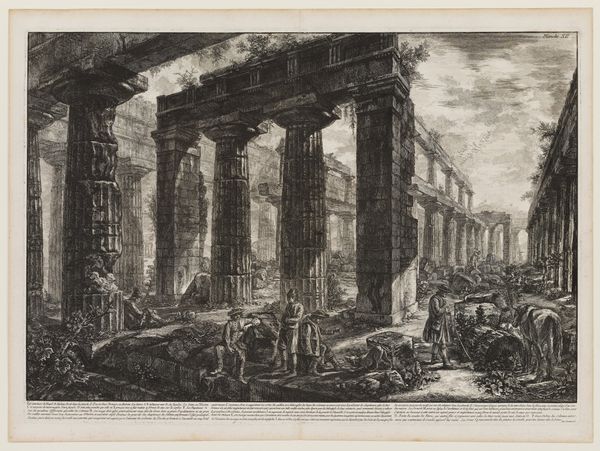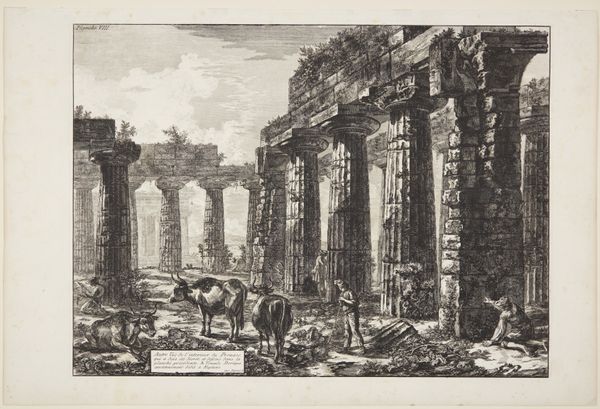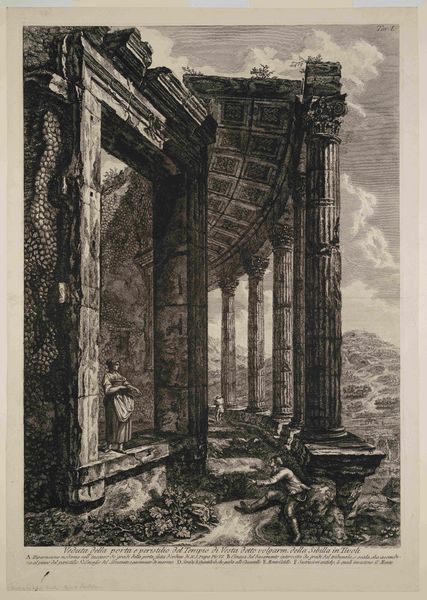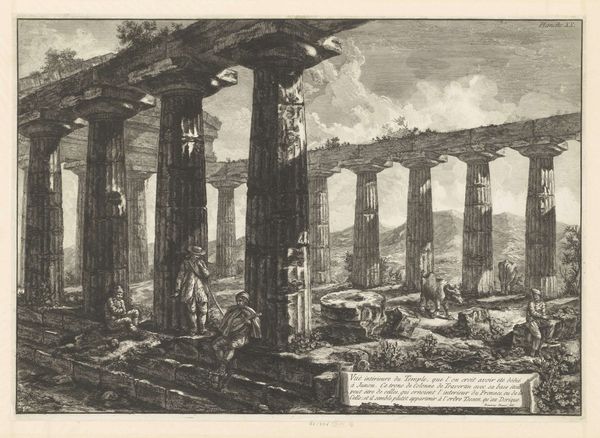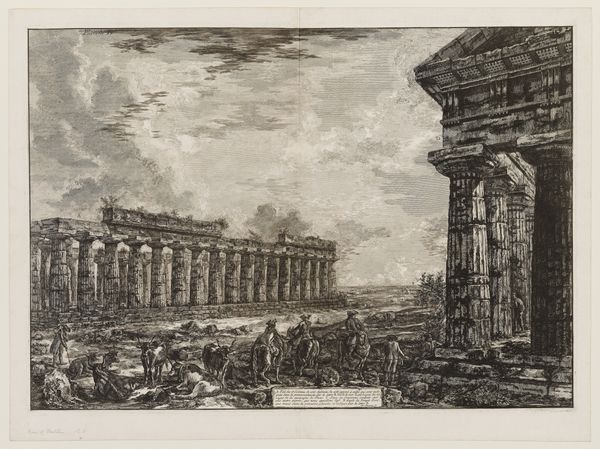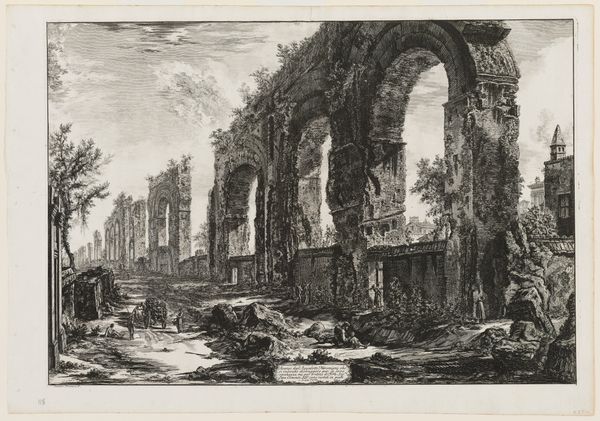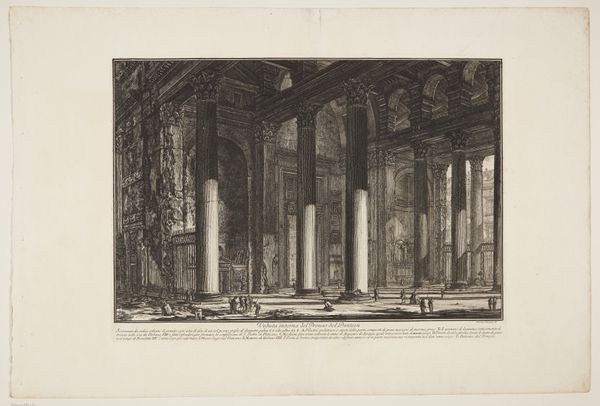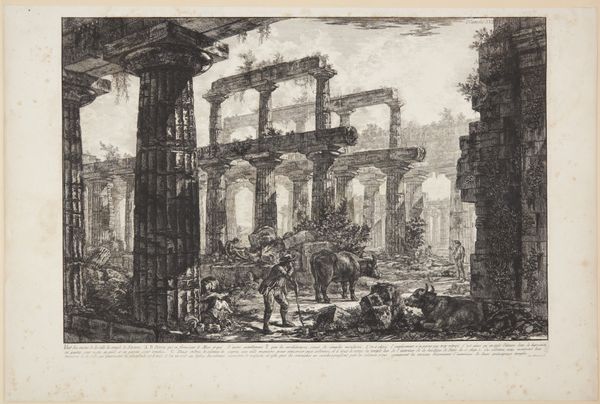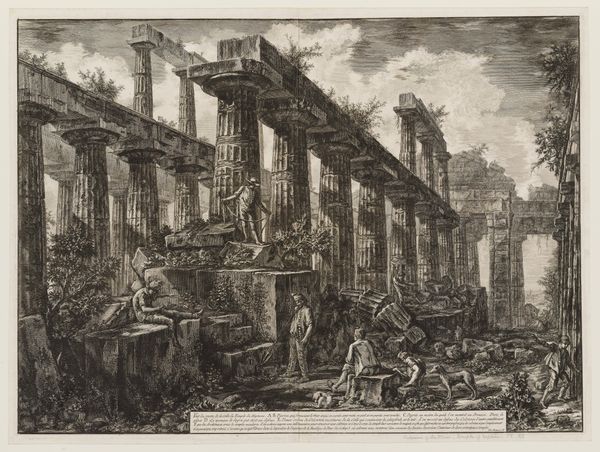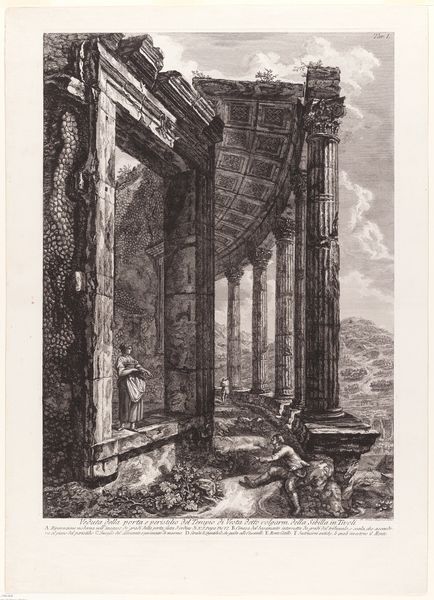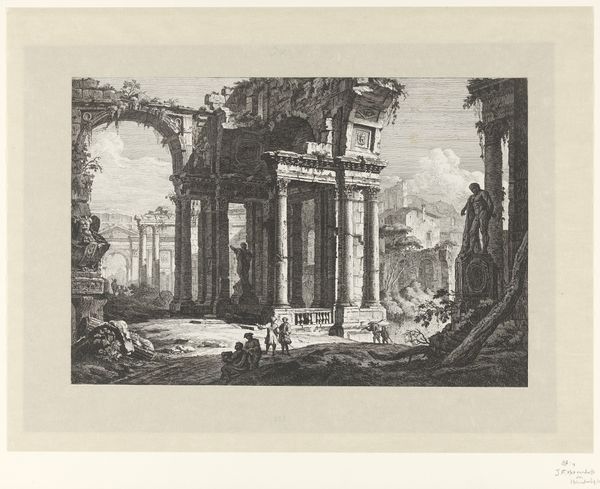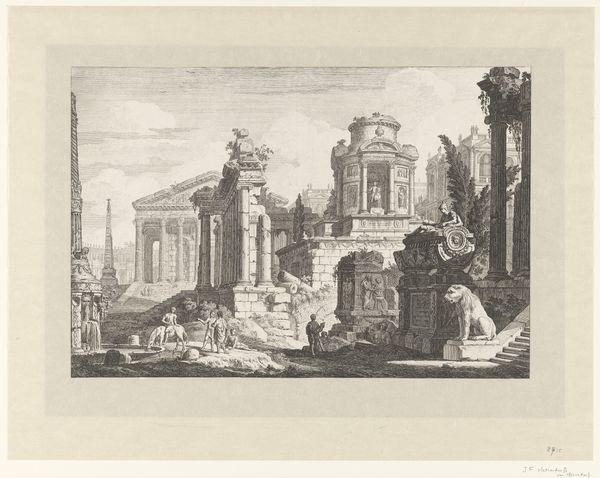
Temple of Neptune at Paestum, seen form the side and drawn larger than in the the first plate 1778
0:00
0:00
print, etching, engraving, architecture
#
neoclassicism
# print
#
etching
#
landscape
#
history-painting
#
engraving
#
architecture
Dimensions: 456 mm (height) x 680 mm (width) (plademaal)
This print of the Temple of Neptune was made by Giovanni Battista Piranesi, sometime before his death in 1778. It's made from etching, a printmaking technique that involves using acid to corrode an image into a metal plate, which is then inked and printed. Etching is a fascinating process, because it relies on both precise control and chance effects. The artist would have carefully prepared the metal plate, and then used sharp tools to draw through a protective coating. The exposed metal is then eaten away by the acid, creating lines that hold ink. Piranesi was a master of this medium, using it to create incredibly detailed and atmospheric images. But the appeal of this print goes beyond the technique. Look closely, and you'll notice the human figures in the foreground. These details emphasize the grandeur and scale of the temple, but they also serve as a reminder of the labor and skill required to produce such an image. Piranesi’s work bridges the gap between the fine arts and craft, reminding us that all art is rooted in material, making, and context.
Comments
No comments
Be the first to comment and join the conversation on the ultimate creative platform.
